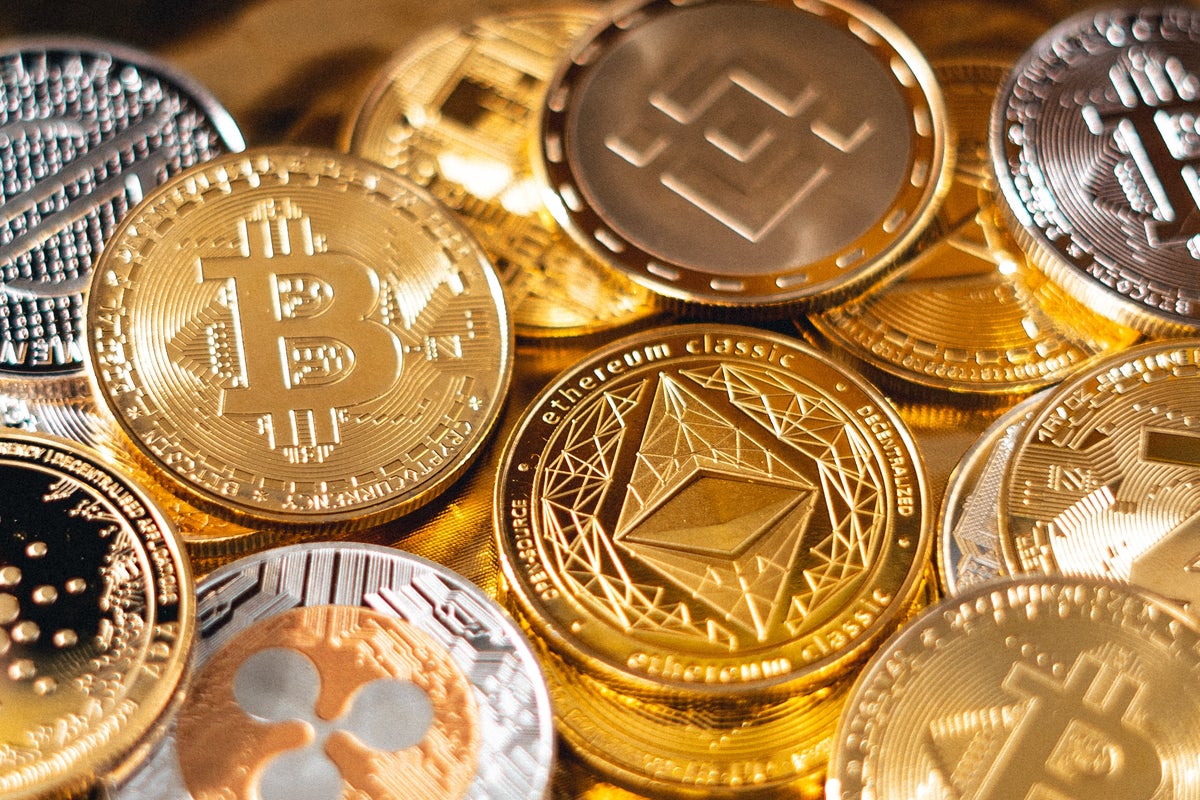As the world heads into the final months of 2022, the cryptoverse and the macroeconomic world at large find themselves deep in the trenches of a bear market. Excitement in the space is markedly down, and sentiment across all capital markets and industries is significantly lower than in recent years.
Crypto-Twitter is a shadow of what it was just 12 short months ago, with many enthusiasts having checked out or exited the space completely. It turns out that maybe, just maybe, the WAGMI (We’re All Going to Make It) believers are coming to terms with the fact that, at least for the time being, everyone might not make it.
In the midst of this, it is easy to forget the significant and incredible progress that the crypto industry has made since the downturn of the last bear market – the 2017 ICO (Initial Coin Offering) boom and bust. With the Bitcoin “Fear & Greed Index” at dizzying lows, it is completely plausible that most individuals are focusing only on the pain today versus the fruits of yesterday and the promises of tomorrow.
But true believers in the blockchain industry will view this current period as only a minor setback, if that. After all, when markets become too frothy, it is only natural that things need to reset. In the process, an industry shakeout occurs, taking out participants and projects that don’t have much substance or future. This leaves only the players that will give the industry its next round of innovations, upgrades and creations to drive industry and adoption forward.
In the meantime, it helps to focus on what has been accomplished within blockchain during these past few years and how these accomplishments have progressed the space to date.
A look back
After the dust settled from the 2017 ICO boom, the crypto market saw Bitcoin collapse from a (then) all-time high of USD$19,000/BTC to around USD$3,300/BTC. After Bitcoin shed more than 80 percent of its value from its December 2017 highs, market sentiment was understandably in the dumps.
Like the current environment, the ensuing bust from five years ago shook out those projects and players that did not have the means or the value propositions to continue moving forward – and instead empowered those that did to continue building.
As the market settled, with BTC stabilizing in the short term within the USD$9,000-10,000 range, crypto began to re-awaken, lured by updates to the space and new possibilities enabled by the blockchain.
Early NFTs
Long before the introduction of ape serums and NBA Top Shot, builders were already working on and releasing NFTs onto the Ethereum blockchain. While the below timeline may contain many names which are unfamiliar to the casual participant of the NFT economy, many of the projects are still popular today – including Cryptopunks (released June 2017), CryptoKitties (released November 2017), Decentraland (released January 2018) and Gods Unchained Collectibles (released December 2018).
While likely viewed as more experimental from the beginning, these NFTs set the stage for the NFT-mania that took over the crypto world for the majority of 2021 – introducing and establishing well-known collections such as Bored Apes, Meebits, Cool Cats and more.
More importantly, beyond the PFP (Profile Picture) NFTs, potential use cases for NFTs have started to take hold within and outside of the crypto industry. From luxury powerhouses (LVMH, Gucci) to retail (Starbucks, Nike, Adidas), global commercial brands are starting to wade into Web3 waters, intrigued by the promise of what NFTs could do and how to leverage them to continue to excite and build brand loyalty with the next generation of their consumers.
A DeFi summer
Outside of the more consumer-friendly NFT space, the period after the initial ICO boom also eventually led us to the summer of 2020 – sometimes referred to as “DeFi Summer.” One of the key pillars of Bitcoin and blockchain technology has always been the removal of the middleman. Therefore, it was particularly exciting when the summer of 2020 saw real lending, borrowing and investing without the use of financial intermediaries. Platforms such as MakerDAO introduced concepts of collateralization of crypto capital to power lending and borrowing. New and novel financial instruments, such as flash loans, enabled innovative ways of leveraging capital and taking advantage of arbitrage opportunities.
While the introduction of such schemes has likely raised many eyebrows within and outside of the crypto world, the possibilities that these initial concepts offer provide the foundation on which to build future DeFi solutions.
In the beginning, decentralized lending and borrowing were generally limited to an ecosystem in which platforms required users to provide fungible tokens as collateral (e.g., ETH). In exchange, stablecoins would be released. So long as the collateralization ratio defined by the platform was maintained, users could leverage their existing assets to perform other transactions with their released capital.
These days, the collateralization of NFTs is beginning to not only rise as a concept and practice but also evolve. Ideas such as tokenizing real estate deeds and using them as collateral to obtain liquidity are not so far-fetched. NFT renting has also materialized, with projects like IQ Protocol that don’t even require borrowers to put up collateral.
Assuming that DeFi continues to grow, the possibilities enabled by tokenizing assets (both fungible, non fungible, real and virtual) and borrowing against them appear very promising for future generations of this space.
Blockchain data, the metaverse, Web3 gaming and migrating to digital worlds
Who knew that land scarcity in digital worlds could evolve to become such an interesting space? While Decentraland popped up in early 2018, it is far from the only virtual land platform within the space. It may be surprising for users to know that The Sandbox has actually been around since 2012 (initially as a mobile game). Others, like Otherside – a Yuga Labs creation – were introduced in 2022.
The over-referenced Axie Infinity – the blockchain industry’s most well-known game at this time – also introduced other takes on what decentralized worlds could be like, as well as the concept of Play-to-Earn (P2E) gaming.
The concept of a metaverse is still very much in its early days, and P2E gaming and blockchain games as an industry still have some issues to resolve to align user incentives to game economies. As blockchain games collect and utilize more data, developers will be able to create worlds that users will be motivated to spend time in. Powered by solutions like PARSIQ, which offers instant Web3 data via its API and data lakes, projects and users will continue to get better and better views into how these decentralized worlds will succeed.
To draw potential parallels, one does not have to look much further than the centralized world of Roblox – a virtual world currently “owned” by the parent company of the same name. Roblox may very well represent the world’s first successful steps into the metaverse and metaverse gaming. Boasting daily active users (DAU) in the tens of millions, Roblox has an impressive base of customers who largely belong to Generation Z (more than 80 percent of its user base is less than 24 years old).
Since Roblox is a publicly traded company, the world has a unique insight into the virtual platform. Quarter after quarter, the company reports impressive growth across various meaningful metrics (DAUs, daily paying users, revenues and more). It may be the most promising view yet into how the upcoming generation interacts within virtual worlds and how they value digital assets, digital currencies and virtual experiences.
The bear will enter hibernation again
For those who have recently entered the crypto space, the crash of ’22 may seem devastating. But those who have been around since the early days of Bitcoin and cryptocurrencies know this is just another cycle for the industry. Eventually, the bear will go back into hibernation, and the products and services that are being developed at this very moment will give rise to the next bull run and further showcase the future benefits and use cases of crypto and blockchain technologies.
We are just scratching the surface of what is possible in the decentralized world. Although the mainstream appears to be quiet, look closely and one will quickly see how much work is being done behind the scenes. From global investment banks entering the space to the continued push forward with legislation and regulation to monitor and oversee the crypto industry, progress is being made, and there is an overall acknowledgment that this space will rise again.
In the meantime, it is a good opportunity for all to reassess and take inventory of the Web3 landscape to see where things currently stand. What will be on the horizon for blockchain and crypto?
Read More: news.google.com









 Bitcoin
Bitcoin  Ethereum
Ethereum  Tether
Tether  XRP
XRP  Solana
Solana  USDC
USDC  Cardano
Cardano  Dogecoin
Dogecoin  TRON
TRON  Lido Staked Ether
Lido Staked Ether  Lombard Staked BTC
Lombard Staked BTC  Pi Network
Pi Network  Wrapped Bitcoin
Wrapped Bitcoin  LEO Token
LEO Token  Chainlink
Chainlink  Hedera
Hedera  USDS
USDS  Stellar
Stellar  Wrapped stETH
Wrapped stETH  Avalanche
Avalanche  Shiba Inu
Shiba Inu  Sui
Sui  Bitcoin Cash
Bitcoin Cash  Litecoin
Litecoin  Toncoin
Toncoin  MANTRA
MANTRA  Polkadot
Polkadot  Ethena USDe
Ethena USDe  WETH
WETH  Binance Bridged USDT (BNB Smart Chain)
Binance Bridged USDT (BNB Smart Chain)  Bitget Token
Bitget Token  Hyperliquid
Hyperliquid  WhiteBIT Coin
WhiteBIT Coin  Monero
Monero  Wrapped eETH
Wrapped eETH  Uniswap
Uniswap  sUSDS
sUSDS  Dai
Dai  Aptos
Aptos  NEAR Protocol
NEAR Protocol  Pepe
Pepe  Ondo
Ondo  Ethereum Classic
Ethereum Classic  Internet Computer
Internet Computer  Aave
Aave  Coinbase Wrapped BTC
Coinbase Wrapped BTC  Mantle
Mantle  Gate
Gate  OKB
OKB